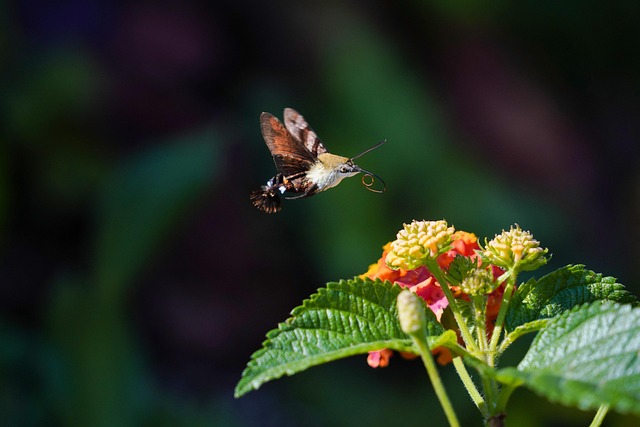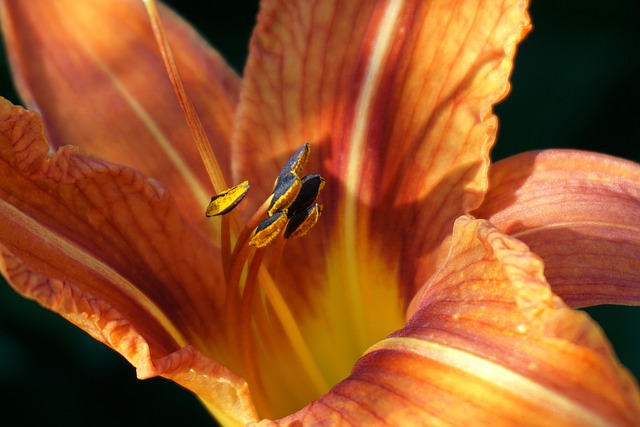Karachi, Pakistan's coastal metropolis, boasts a diverse and resilient floral landscape shaped by unique microclimates. However, climate change is disrupting flowering patterns, leading to earlier bloom times and affecting ecosystems, plant health, and pollinators. Research shows plants in Karachi are adapting, with some blooming earlier and others later. These shifts have significant implications for agriculture, food security, cultural traditions, and biodiversity. Advanced climate modeling helps predict floral changes, guiding proactive conservation efforts like adjusted planting schedules and sustainable gardening practices to safeguard Karachi's unique botanical heritage.
Karachi, a vibrant metropolis, boasts a unique floral landscape shaped by its distinct ecosystem. However, changing weather conditions due to climate change are disrupting traditional flowering patterns, with implications for both nature and society. This article explores these shifts in depth, from the impact on various plant species to societal adaptations and future prospects. Understanding these changes in Karachi’s floral tapestry is crucial for mitigating potential disruptions and preserving the city’s rich botanical heritage.
- Understanding Karachi's Floral Landscape: A Unique Ecosystem
- The Impact of Climate Change on Flowering Patterns
- Observed Shifts in Blooming Timings Across Different Species
- Adapting to New Weather Norms: Plant Responses and Survival Strategies
- Societal Implications: From Agriculture to Cultural Traditions
- Future Prospects: Predicting and Mitigating Floral Disruptions
Understanding Karachi's Floral Landscape: A Unique Ecosystem

Karachi, Pakistan’s bustling metropolis, boasts a unique and diverse floral landscape that is both a testament to its rich ecological heritage and a vibrant reflection of the city’s ever-changing weather conditions. This urban oasis is home to an array of native plant species, each meticulously adapted to thrive in the region’s specific climatic nuances. From drought-resistant succulents to fragrant blooms that flourish during monsoons, Karachi’s flora showcases remarkable resilience and adaptability.
The city’s diverse microclimates, influenced by its coastal location and urban infrastructure, create pockets of ecological variation. These conditions foster a myriad of floral forms, colors, and scents, attracting both local residents and tourists alike. Understanding this intricate relationship between weather patterns and plant life is crucial in appreciating Karachi’s natural beauty and ensuring the long-term preservation of its unique floral ecosystem.
The Impact of Climate Change on Flowering Patterns

Climate change is significantly altering flowering patterns worldwide, and Karachi, like many other urban centers, is experiencing these shifts. Rising temperatures and changing precipitation patterns are causing plants to bloom earlier in the year, disrupting traditional seasonal cycles. This phenomenon has profound implications for ecosystems and human societies alike. In Karachi, where the climate is already semi-arid, these changes can lead to reduced water availability during critical growth periods, affecting not only plant health but also the city’s overall biodiversity.
The impact extends beyond local flora; it influences fauna that depend on these plants for food and habitat. Pollinators, such as bees and butterflies, are particularly vulnerable, as shifts in flowering times can desynchronize their activities with flower availability. This disruption can lead to decreased pollination rates, impacting crop yields and the survival of various plant species. Understanding these changes is crucial for adapting urban planning, agriculture, and conservation strategies in Karachi to ensure resilience in the face of a changing climate.
Observed Shifts in Blooming Timings Across Different Species

In Karachi, as in many other regions worldwide, researchers have noticed striking shifts in blooming timings across various plant species due to changing weather conditions. Historically, plants bloomed in response to consistent seasonal cues, but this relationship is becoming increasingly disrupted by fluctuating temperatures and rainfall patterns. For instance, some flowers are now observed to bloom earlier in the year, while others delay their flowering until later seasons, demonstrating a remarkable adaptation to the new climate norms.
These shifts have significant implications for local ecosystems and even human activities that depend on seasonal plant life. In Karachi’s specific context, where diverse flora coexist, understanding these changes is crucial. Scientists study different species, from cultivated plants in urban settings to wildflowers in nearby forests, to track the timing of blooming. This data reveals not only when blooms are occurring but also how they are advancing or retreating over time, providing valuable insights into the impacts of climate change on Karachi’s botanical landscape.
Adapting to New Weather Norms: Plant Responses and Survival Strategies

In response to the shifting weather patterns, plants in Karachi are demonstrating remarkable adaptability. Increased temperatures and altered precipitation regimes challenge traditional blooming cycles, yet many species have evolved survival strategies to thrive under new norms. Some adjust their flowering times, budding earlier in the spring or later in the fall to align with optimal conditions, while others modify their growth habits, growing more robustly to cope with stress.
These responses reflect a complex interplay between genetic predispositions and environmental cues. Plants sense changes in light duration, temperature gradients, and water availability through intricate signaling pathways, initiating physiological adjustments. For instance, certain species may produce more drought-resistant seeds or deeper root systems to access groundwater during prolonged dry spells. Such adaptations not only ensure plant survival but also contribute to the overall biodiversity and resilience of Karachi’s ecosystems.
Societal Implications: From Agriculture to Cultural Traditions

In cities like Karachi, where climate change is acutely felt, shifts in flowering times have significant societal implications that extend far beyond mere environmental observations. For farmers, adapting to these changes can mean revising planting seasons and crop choices, potentially impacting food security and agricultural practices. In cultural traditions deeply rooted in natural cycles, such as floral festivals or ceremonies tied to specific blooms, adjustments may be necessary to maintain the authenticity and relevance of these events.
These shifts also disrupt ecological balance, affecting pollinators, other plants, and animals that depend on specific flowering times for their own survival and reproduction. The ripple effects can lead to a cascade of changes in ecosystems, potentially altering local biodiversity and the overall health of natural habitats. In Karachi, where rapid urbanization has already compressed green spaces, these shifts underscore the urgency for sustainable urban planning and conservation efforts to preserve both biological diversity and cultural heritage.
Future Prospects: Predicting and Mitigating Floral Disruptions

As weather patterns become increasingly unpredictable, especially in urban areas like Karachi, understanding and predicting shifts in flowering times is crucial for both ecological balance and economic sustainability. Scientists are leveraging advanced climate modeling to anticipate floral disruptions, enabling proactive measures. These include adjusting planting schedules, selecting resilient plant varieties, and implementing sustainable gardening practices that can mitigate the impacts of changing temperatures and rainfall.
For instance, studies show that certain flowers in Karachi may bloom earlier in response to rising spring temperatures. This could disrupt pollination cycles and impact local ecosystems. By integrating climate data with floral behavior models, researchers aim to develop precise predictions, allowing urban planners and gardeners to make informed decisions. Such proactive strategies not only ensure the longevity of vibrant floral landscapes but also foster a more resilient and sustainable future for Karachi’s diverse botanical heritage.
The shifting blooming patterns in Karachi’s diverse floral landscape mirror the broader impacts of climate change globally. As temperatures rise and weather conditions evolve, understanding these shifts is crucial for mitigating potential disruptions in ecosystems, agriculture, and cultural traditions. By studying plant responses and adapting to new norms, we can foster resilience and preserve the beauty and biodiversity that define Karachi’s unique botanical tapestry.

Leave a Reply